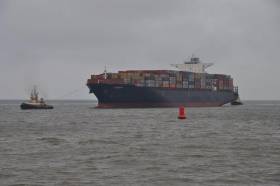Displaying items by tag: New USEurope Service
Liverpool2 Receives New Trans-Atlantic Container Services
#Ports&Shipping - Liverpool2, Peel Ports’ flagship deep-water container terminal, welcomed its largest regular caller to date when 2M (Maersk and MSC alliance) introduce a new transatlantic container service to the port that began yesterday.
2M is switching its TA2 service from Felixstowe to Liverpool on a temporary basis. At the same time, Maersk Line’s South American service, Colombia Express, will also start calling at the port of Liverpool, exporting UK goods to Newark.
Liverpool will be the final port of call for both weekly services as they head westbound across the Atlantic. The ships will load UK export cargo such as Scotch whisky, food products and trade machinery. The new services will also see the Port of Liverpool open up direct links with the US ports of Charleston and Savannah.
The TA2 and Colombia Express routes will use a range of vessels up to 8500 TEU. The larger vessels will call at Liverpool2 with smaller vessels using Royal Seaforth Container Terminal.
Earlier this year Peel Ports introduced a rail freight service directly from the Port of Liverpool in partnership with DB Cargo. It is now the only major UK container terminal to offer tri-modal connectivity, with road, rail and water, the Manchester Ship Canal, plus short-sea shipping.





























































